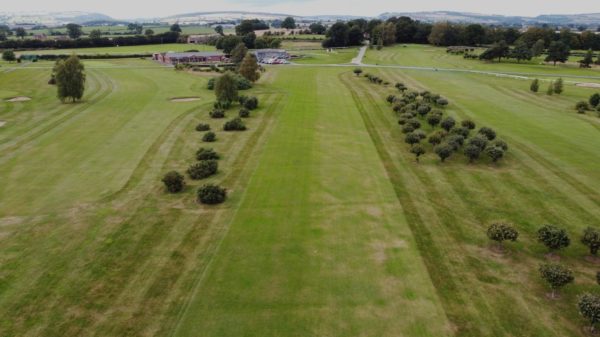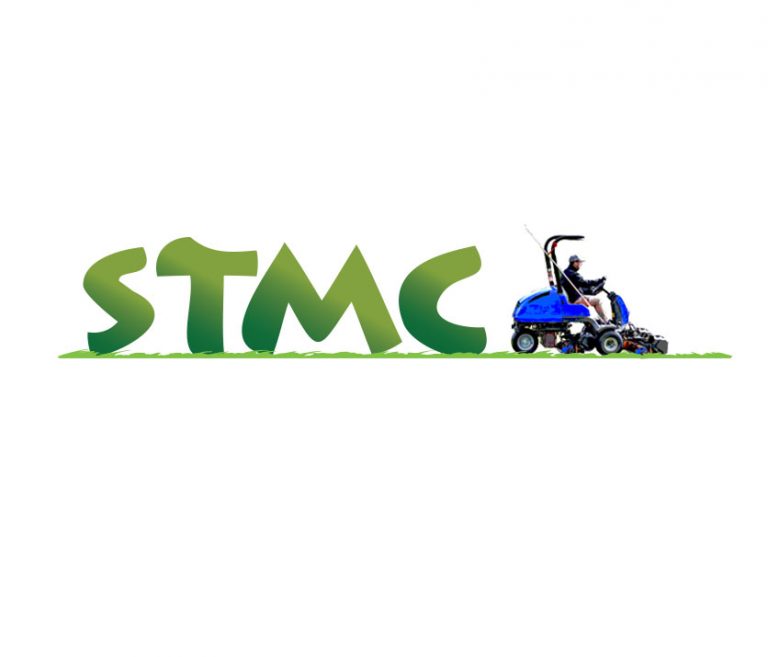 Non-Irrigated Split Fairway Soil Surfactant Trial, Ludlow Golf Club, 2021 – Scott Nightingale (TurfCare), Nick Gadd (RhizoSolutions)
Non-Irrigated Split Fairway Soil Surfactant Trial, Ludlow Golf Club, 2021 – Scott Nightingale (TurfCare), Nick Gadd (RhizoSolutions)
The weather has a fascination for us, especially this time of year, when mother nature can turn off the water tap at a moment’s notice.
The impact of water shortage is more damaging to the turfgrass plant than high temperatures, as detailed by Drs. Jiang & Huang in their article, Drought and Heat Stress Injury to Two Cool-Season Turfgrasses in Relation to Antioxidant Metabolism and Lipid Peroxidation, published in Crop Science 41. 10.2135.
So many times, we rely on anecdotal evidence and opinions to decide on turfgrass management practices, and not FACTS or DATA based on scientific evaluations. Here we would like to present you with some trial results on how to produce high quality turf surfaces, even in the face of water shortages, drought and high temperatures. Put simply manage your water and soils more effectively.
Introduction
The following trial, conducted at Ludlow Golf Club between July and September 2021, provides ample evidence that we can definitively get more out of our rainfall on non-irrigated fairways. Also, if you are fortunate enough to have fairway irrigation, that too will be made dramatically more efficient and effective; we have a companion study we will report on shortly from the United States.
The Location
South Shropshire’s Ludlow Golf Club is located in Bromfield, just outside Ludlow. Think of it as a landlocked Links course. Surrounded by Ludlow Racecourse, the golf club is on a famously sandy site, with a nearby sand and gravel works. The location is very flat and exposed. Because of its exceptionally sandy soils, Ludlow Golf Club has a reputation for being immediately playable after the worst rains, due to its free draining characteristics. However, this free draining sandy soil can make the fairways difficult to manage in the summer months, especially as they do not benefit from any irrigation.
Mark Cleverley, the Course Manager at Ludlow at the time, consulted with Scott Nightingale from TurfCare. He agreed to try TurfCare’s new soil surfactant, ProWet Evolve, in a split fairway trial – which at Ludlow would be a very tough test. Scott coordinated the demonstration trial with Nick Gadd from RhizoSolutions, TurfCare’s technology partner. The trial was designed to include detailed measurement of volumetric water content, plus professional NDVI (Normalised Difference Vegetation Index), a measure of plant health, and visual analysis by aerial drone.
Application
The fairway was split down the middle from tee to green. The only difference in management was the application of ProWet Evolve to the west side of the fairway.
ProWet Evolve was applied at 12.5L/Ha in 800L of water on the 7th of July, 4th of August and 1st of September 2021.
No irrigation was applied post application, but there were rainfall events within a few days of each application to move the product into the soil.
Measurements
Measurements were taken on 18th of August and 16th of September 2021.
Volumetric soil water content was measured at 3.8cm (1.5”) and 7.6cm (3”) depths in transects (lines) across the width of the fairway at the 100, 150 and 200 yard markers to avoid any sample bias. All measurements were made using a Spectrum FieldScout TDR 350.
A drone, piloted by Don Cockman of ClearSky Imaging, a BASIS qualified operator, was used to collect both NDVI and visual data.
Weather
The weather during the trial was typically variable, with July being generally dry, early August being wet, and mid-August to September being quite dry. Temperatures were somewhat warmer in late-July and early-September.
Observations in August
Turf stress was clearly evident before the trial commenced. By the first measurement date, 18th of August, after two applications of ProWet Evolve, the untreated side of the fairway was showing severe stress, as would normally be expected at Ludlow. The side treated with ProWet Evolve was looking completely different. The treated side was healthier, greener and more uniform.

Seeing is compelling, but what was causing this? Simply evaluating the volumetric soil water content and NDVI provided the compelling evidence.
The treated side of the fairway had an average soil volumetric water content of 18.7 vol%, the untreated side had a lower volumetric water content of 16.0 vol%. Conclusion, small difference in soil water status, including total volume and uniformity of water distribution, have profound effects on turf health, quality, and performance. The NDVI data compared to the visual data is also compelling.

ProWet Evolve was clearly ensuring better use of the available rainfall, and producing a more uniform, healthier playing surface for the golfers. So did this continue?
Observations in September
Significant turf stress continued into September, caused by low rainfall and a period of higher-than-normal temperatures. This was followed by a period of rainfall and lower temperatures, immediately prior to the measurement date on the 16th of September. Would the applied Evolve treatment be sufficient to maintain turf resilience under stress?

The treated side of the fairway had an average volumetric water content of 22.6 vol% while the untreated side had a lower volumetric water content of 18.6 vol%. Conclusion, the portion of the fairway treated with ProWet Evolve withstood stress better, again due to significant difference in soil water status. The NDVI data compared to the visual data provide compelling evidence of improved turf resilience in the ProWet Evolve treated side of the fairway.

Conclusion
So, what can we conclude from this demonstration trial? Based on the collected data, we have the evidence that the side of the fairway treated with ProWet Evolve outperformed the untreated side in terms of turfgrass quality, uniformity, playability, and resilience.
Soil surfactants are valuable tools in the management of turfgrass. However, do not just believe everything you hear. Ask your suppliers for results from real-world evaluations before you make any substantial investment. Make the most out of your water!


































